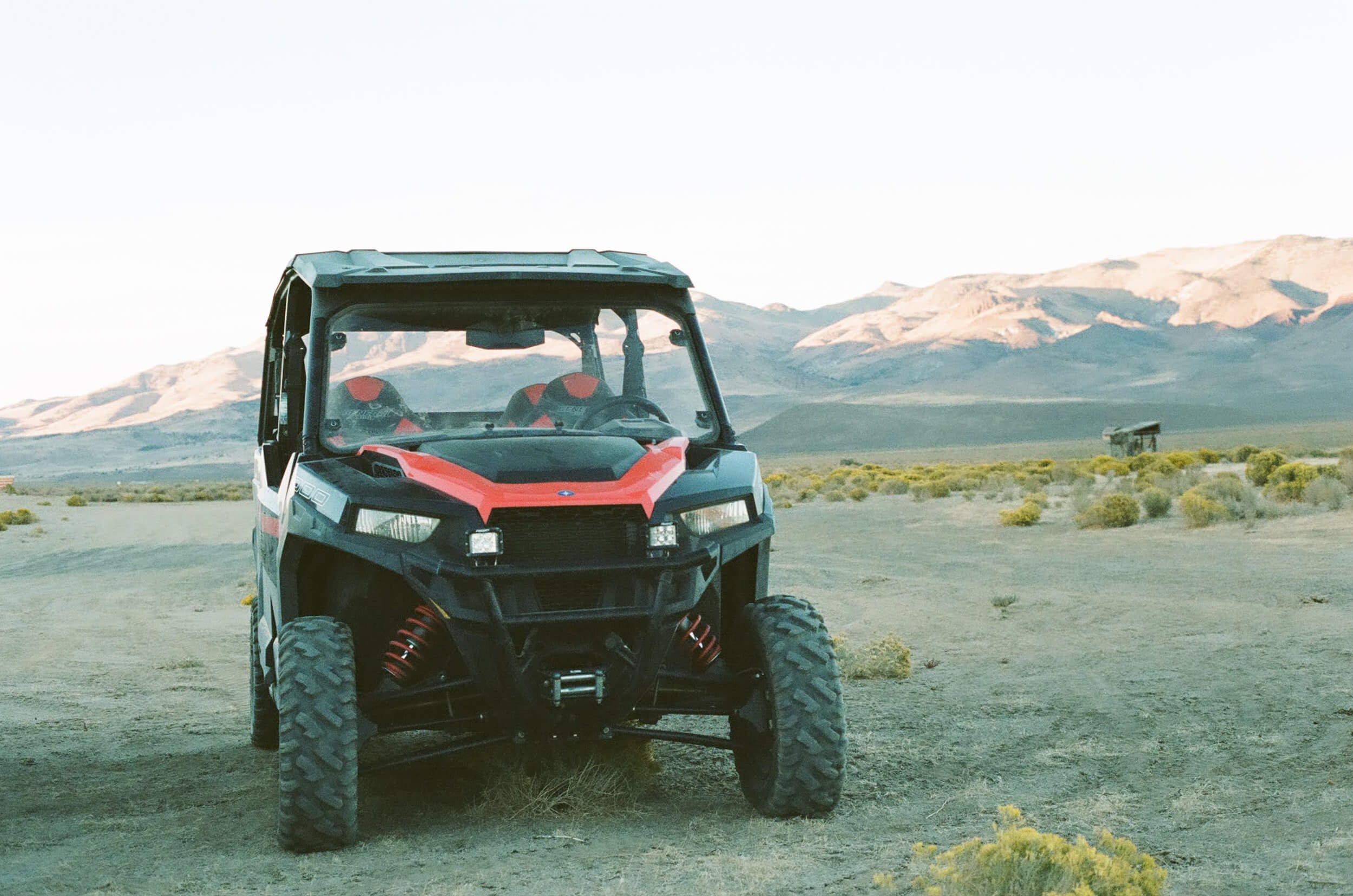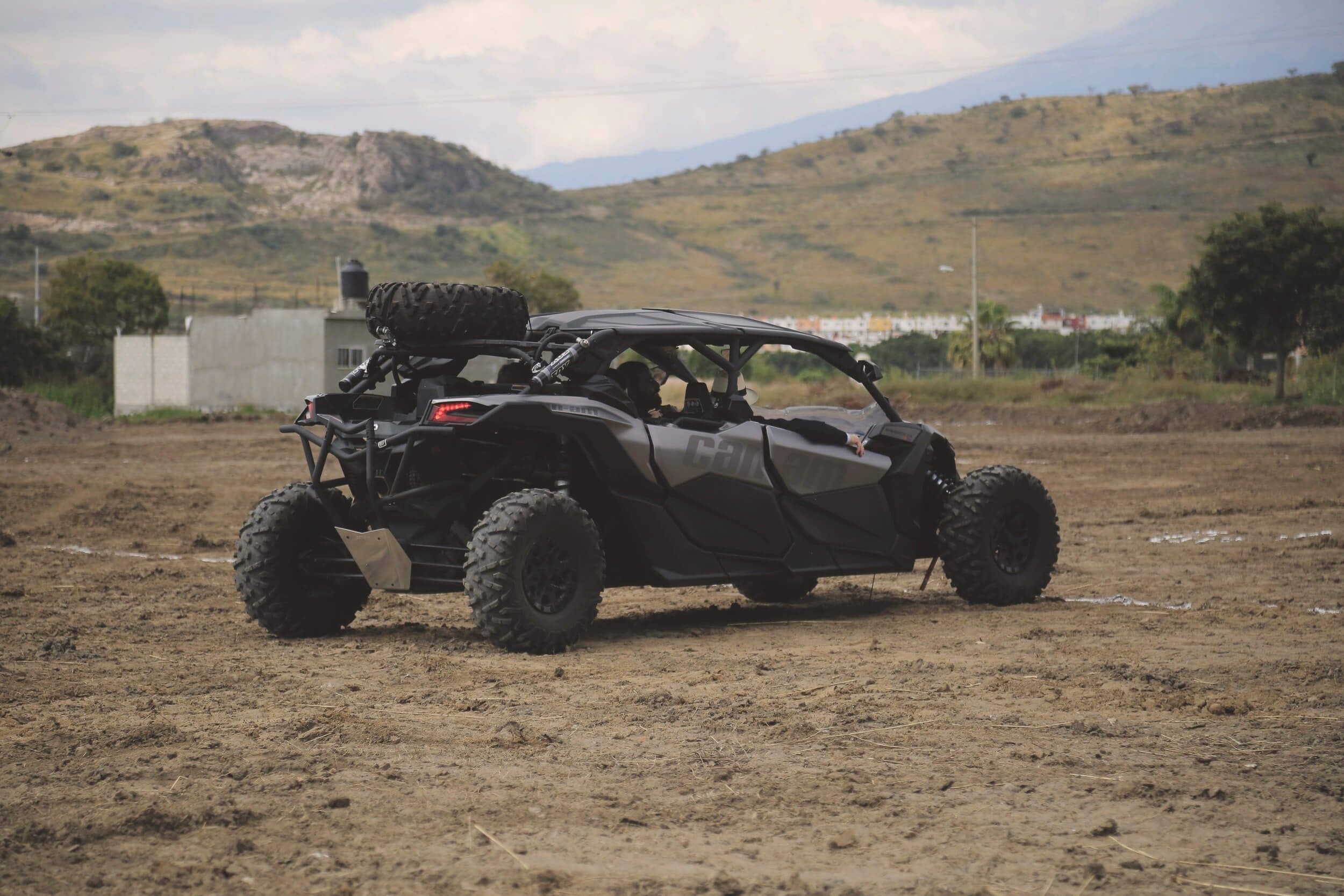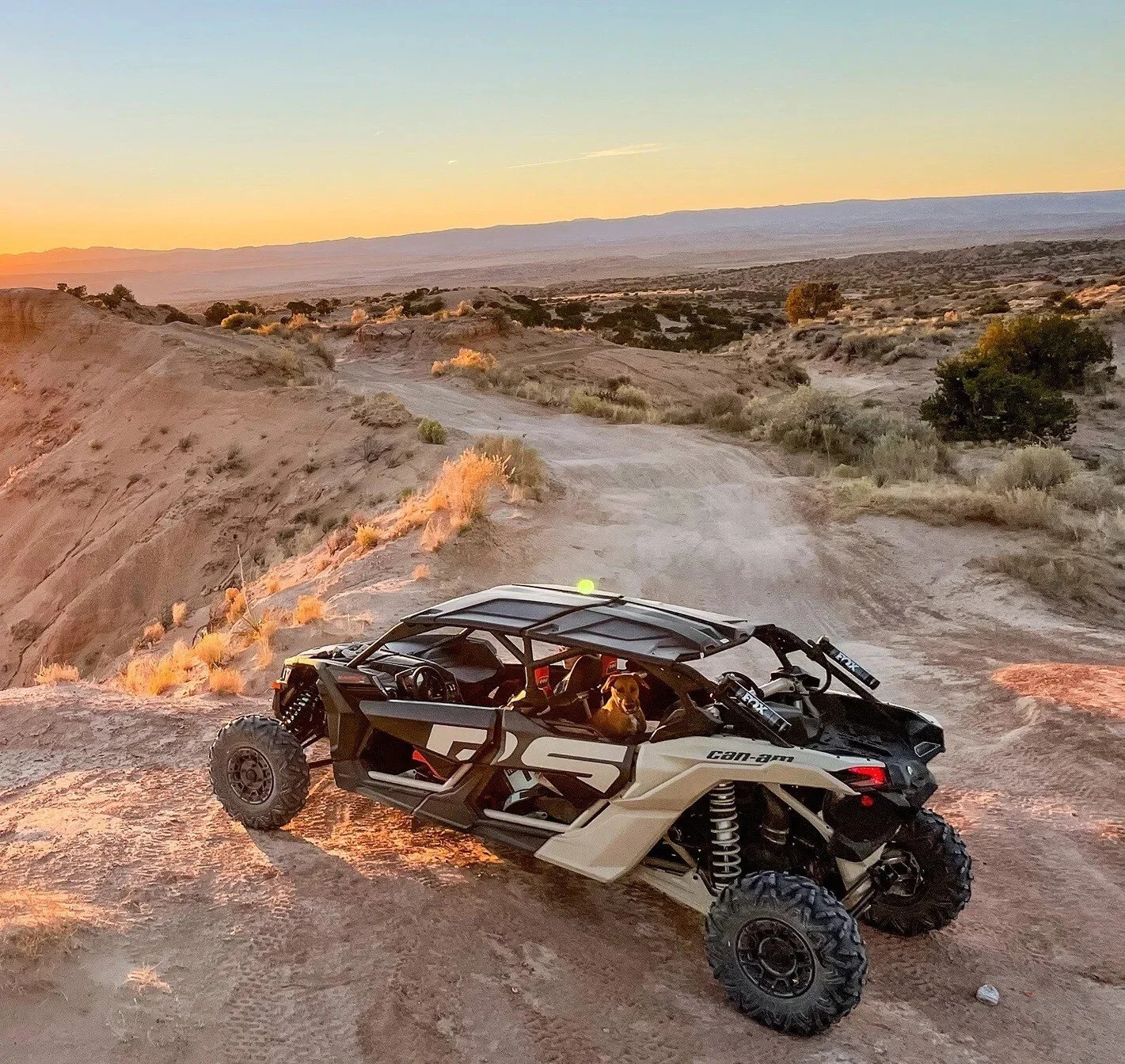In recent years, the Utility Terrain Vehicle (UTV) has rapidly become one of the most popular off-road vehicle options. Although there are a few six-seaters, these machines usually seat two-four people and are very stable and safe since they are built with a full roll-cage. A lot of them are also built with a small bed on the back, making them a natural chore vehicle on farms and ranches where they can haul firewood out of places where trucks cannot get to, hay and animal feed to the fields while being compact enough to work inside of barns and stables. Since you can add a cab and snowplow to them, they are popular with landscapers, too.
If you are looking at this list of things they can do, you might have the idea that it would be pretty helpful for a UTV to be street legal, and you would be right. However, not all states are friendly to this idea. This is where we come in to help you tag your UTV and get it on the road, and where you decide which street-legal UTV is best for road use.
What is A UTV, Anyway?
The Utility Terrain or Task Vehicle is a UTV. It is the evolutionary result of decades of design progress. The lineage of evolution probably dates back to the early years of two-stroke dirt bikes. First, there were the go-carts, and then we saw sand rails and dune buggies being converted from the readily available and plentiful VW Bug population.
The earliest purpose-built all-terrain vehicles (ATVs) were three- and four-wheeled, using engines mainly adapted from motorcycles. Light and quick, they were recreational and developed fanatical followings.
Three-wheeled ATV production was ceased voluntarily by all manufacturers in 1987 and was never resumed. Four-wheeled ATVs exploded in popularity as a result, and truthfully it was inevitable. There might be a select few highly experienced riders who could handle a three-wheeled ATV (or ATC) in the 500cc range, but it would be very few.
Over the decades, the purpose of these machines adjusted sharply. While recreational trail riding and racing are as popular as ever, the same machines are now widely used for overland hunting, farm and ranch chores, landscaping, and about anything else you can imagine.
UTVs took pages from the playbook of the ATV and at least a few pointers from the epic dune buggy era. Just look at a few examples of the early crossover attempts from ATV-to-UTV, namely John Deere Gators' early generation. They were closer to being a golf cart than a modern UTV, but they were necessary for the evolutionary process.
Popular modern UTVs are routinely more than 1,000cc machines, with plenty of examples that will maintain a sustained speed of over 50mph, with top-end speeds pushing 70mph. You might avoid interstate use with one, but they certainly have more than enough oomph for municipal and rural roads.
To be very specific about what a UTV is, reference the ANSI/OPEI B71.9-2016: “ A Multipurpose Off-Highway Utility Vehicles (MOHUV) has features specifically intended for utility use and has the following characteristics: 1) intended to transport a person(s) and/or cargo, with a top speed in excess of 25 mph (40.2 km/h); 2) 2030 mm (80 in) or less in overall width; 3) designed to travel on four or more wheels, two or four tracks, or combinations of four or more tracks and wheels; 4) using a steering wheel for steering control; 5) with a non-straddle seat; 6) with a Gross Vehicle Weight Rating of no more than 1814 kg (4000 lb), and 7) with a minimum cargo capacity of 159 kg (350 lb).”
Need to know the whole rundown on street legal UTVs for your state? We researched all 50 states plus Washington, D.C. and 5 US territories to tell you everything you need to know.
Who Makes the Best UTVs?
So, who makes the best UTVs? There are several heavy-hitters in the field, but let’s start with the absolute reigning champ: Honda. And by start there, I mean go back to when they practically ran a monopoly on the industry.
Honda
Anyone who has ever owned a Civic or an Accord already knows why they are at the top of this list. If you are buying a motorcycle and intend to ride it more than just look at it or talk about owning it to other owners of the same brand, you are buying a Honda.
Honda is a motorcycle company; they were making bikes before cars. Although Honda referred to them as all-terrain cycles (ATC), they were also the first to produce an ATV-type of vehicle, the aforementioned “three-wheelers.” Their first model was the ATC90, which was introduced in 1970. Incrementally over the years, they grew the displacement of their trikes up to the beefy ATC350X. Anyway, Honda not only dominated the ATV market over these years, they practically designed and ran the market. They remain highly competitive, as they remain the world’s largest motorcycle manufacturer, a title they have held since 1959. Today’s Honda UTVs are some of the most reliable vehicles around and should have no problem driving for years to come.
Polaris
Headquartered in chilly Minnesota, Polaris Industries started out life as a snowmobile manufacturer. However, Polaris branched out over the years, becoming a significant player in the ATV movement and then moving into the UTV market. As of 2020, they were the second highest-selling UTV manufacturer, behind CAN-AM.
Can-Am
A relative newcomer to the ATV and UTV market, CAN-AM is a brand under the umbrella of Bombardier Recreational Products (BRP Inc.). Can-Am offers a complete line of UTVs, any number of which are great candidates for a street-legal UTV conversion.
Why Make A UTV Street Legal?
Let’s cut to the chase: while they are wildly popular, UTVs are not always cheap. A new, well-equipped UTV will easily run more than $20,000, which is in the ballpark of a decent used pickup truck. And while used ones are cheaper, regardless of your entry price, there are several factors that make UTVs so universally loved.
UTVs Are Fun!
Sometimes that is all you need to know. UTVs are tremendously fun vehicles. They are fast (unless you drive a John Deere Gator; hard pass), extremely agile, and easy to drive. UTVs are very difficult to get stuck in and provide you with the ability to take multiple people with you into hard-to-reach places. A stock UTV will get you into places that trucks and Jeeps either cannot go or need to be radically modified to get into and out.
UTVs Are Highly Versatile
Probably what makes UTVs so attractive is also what makes them such great candidates for street legal UTV conversions.
UTVs can go from one minute hauling hay bales, plowing snow, hauling a buck out of the woods, and be joyfully exploring the deep backcountry the next. Many models offer the ability to enclose the cab and install heat and air conditioning. They are one of the most valuable tools on wheels that you can buy.
It is prevalent in rural America to see UTVs driving down the main street and parked at stores, little league games, and diners anyway. Most rural law enforcement just turns a blind eye to this because it is a cultural norm, but not all of them. So many UTVs crisscross rural roadways because they add tremendous value to their owners; still, it makes sense to go ahead and get officially street legal to tag your UTV and make sure you don’t run local law enforcement astray.
Which UTVs Are the Best to Make Street Legal?
We have covered the leading brands of UTVs, but what are the best UTVs, in general, to make street legal?
As a general rule, it is prudent to make sure that your unit will be able to keep up with traffic unless you are using it as a golf cart in a beach community or retirement community, in which case you can tag it like a golf cart. Otherwise, it is wise to stay on the upper end of the power curve when mixing with traffic. That means big, fast, and powerful UTVs. You don’t want a machine that you have to floor the whole time just to stay with traffic. That will cause damage over time.
“You don’t want a machine that you have to floor the whole time just to stay with traffic. That will cause damage over time.”
UTVs with about 1000cc of displacement and a top speed over 65 MPH are generally the best ones to make street legal. These larger UTVs can keep up with traffic without causing damage to their drivelines.
Honda Talon 1000X
There is a lot to love about the Honda Talon 1000X. First, it comfortably seats four fully-grown adults in a full roll cage. A 999cc liquid-cooled twin married to a six-speed automatic transmission propels the Talon, doing away with belt-driven transaxles.
The Talon 1000X can squeeze out a very respectable 73mph top-end on a closed track, making it considerably faster than my first truck (NOT a joke). This is less a utility vehicle and more of a dedicated ripper, which is fine for a street-legal UTV. You know that the Talon 1000X will give you many years and miles of trouble-free service, which is why it tops our list.
Polaris RZR Turbo R
If speed is what you want, speed is what you get with the Polaris RZR Turbo R. While Polaris does not outright state what the top speed is, a quick search of forums reveals that the factory governor kicks in around 85mph.
Now, if you plan on spending a lot of time on paved roads with an RZR cruising over 30mph-40mph, you are going to need to ditch the knobby tires and put on a set of radials. The Turbo R is a two-seat side-by-side (SXS) built to tear up trails and dunes with a mind-bending 181 horsepower coming out of the 925cc mill.
Mahindra Roxor
The original Roxor was a fantastic concept, adapting much of the practicality of the original Willys Jeep with a modern powertrain and safety upgrades. Well, Mahindra is back with an even more jacked and updated version of the Roxor that is the perfect UTV to make street legal.
The Roxor is pure utility, sporting a 2.5L turbo diesel engine. The twelve-gallon fuel capacity will stretch for very long distances, and the towing capacity of 3,490lbs is phenomenal. If your use for a UTV primarily involves farm and ranch work, the Roxor is an absolute unit. We happen to be the original source for getting your Roxor street legal, something you should absolutely do whether you’re working, playing, or a little of both.
Want to get your UTV street-legal? Enter your email below to find out how
What States Allow UTVs On The Road?
So, this is where things have always gotten dicey for UTV owners for years: every state has different rules surrounding the use of UTVs on public roads. Worse yet, every county and even municipality may vary. So, you have to stay constantly on top of the rules to drive a UTV on the road legally, or just hope that the local heat leaves you alone.
Having researched all 50 states plus Washington, D.C., and 5 US territories including UTV-specific laws in each state, we can say with certainty that making your UTV street legal with a title, registration, and license plate are easier and less risky than relying on localized laws and obscure state statutes.
When you purchase our Street Legal UTV Service, your UTV is no longer an off-highway vehicle trapped by local legislation. What’s more, you don’t have to deal with the angry clerk at the DMV or get your UTV inspected. We handle it all for you.
The Dirt Legal Experience
Like we say on our website: all you want to do is tag and register your UTV; all we want to do is help you do that. So when you choose Dirt Legal’s Street Legal UTV Service, we offer the peace of mind of knowing that you don’t have to figure out all of these intricacies of tagging your UTV yourself. Leave that to the experts: us.
What we need from you is just legal proof of ownership, which can come in one of four different forms:
Title
Manufacturer’s Certificate of Origin (MCO)
Financing (except Synchrony Bank)
A bill of sale
What You Get in Return from Dirt Legal
Once you have provided us with legal proof of ownership, you will receive:
An out-of-state title, tag, and registration. Your UTV will now be street legal. This process typically takes 2 to 4 weeks (3 to 12 weeks if your UTV is financed)
Dedicated agent support throughout the whole process. If you have questions about paperwork, state-to-state transfers, required parts, and anything else, just give us a call.
Do you have more questions about our process, and how we can get your UTV registered, tagged, and on the road? Check out the Road to Freedom!
UTVs represent one of the best options for making an OHV street legal. They are overbuilt for safety with full roll cages and racing harnesses on many models. They are fast, and they can offer many advantages for their users, whether it be pushing snow, sweeping sidewalks, hauling firewood, or just grabbing pizza. Not to mention they are fantastic and fun! Titling and tagging them is a daunting undertaking, but we do it every day, so don’t hesitate to contact us if you need any help along the way.












It is possible to modify your UTV to make it street legal, and it might be easier than you think.